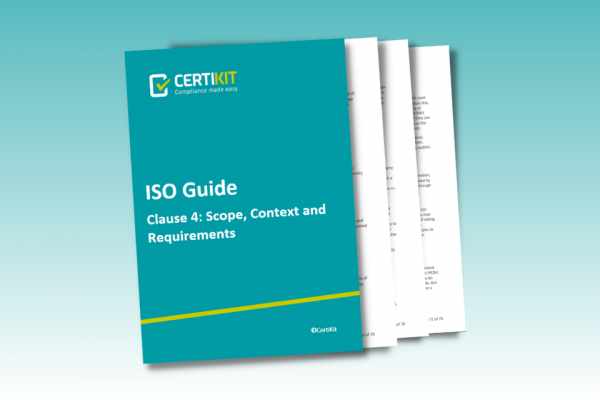Sub-Clause 4.1 - Understanding the organization and its context
In all the ISO management system standards, sub-clause 4.1 is relatively small but requires some careful thought to complete. It asks you to identify the external and internal issues that are relevant to the purpose of the management system. This requires you to look at those issues that can have an effect on your management system.
For instance, if you are looking at an ISO9001 Quality Management System (QMS), you would be looking at those issues that could affect the quality of your products and services to your customers.
External issues could be what we have seen recently, such as fuel restrictions which had an impact upon distribution of products, or changes in regulations that relate to your business sector.
Other examples of external issues include:
- Statutory and regulatory requirements
- Business sector specific requirements and agreements
- Globalization
- Natural environment
- Social, economic, political, and cultural factors
Internal issues could be equipment limitations that have an impact on the efficiency of your manufacturing cycle, or business reorganizations and location moves that impact on the employees.
Other internal factors to think about include:
- Strategic direction
- Types of products or services
- Available resources
- Size and complexity of the organization
- Levels of competence and organizational knowledge
- Performance of the organization
Depending upon the type of management system, you need to identify these issues that affect that particular subject, such as occupational health and safety (ISO45001) or IT service management (ISO/IEC 20000).
One way of determining your internal and external factors is to conduct a SWOT (Strengths, Weaknesses, Opportunities and Threats) and PESTLE (Political, Economic, Social, Technology, Legal and Environmental) exercise. Focusing on these areas will help you to identify potential factors that could influence your management system.
You should also include some information about your organization, some history, your locations, if a multi-site organization, and the types of products or services you produce or deliver.
This is also a good place to include your mission, vision, values, and culture:
- Mission – the organization’s purpose for existing
- Vision – aspiration of what the organization would like to become
- Values – principles and/or thinking patterns intended to play a role in shaping the organization’s culture and to determine what is important to the organization, in support of the mission and vision
- Culture – beliefs, history, ethics, observed behaviour and attitudes that integrated within the identity of the organization
It is important that the organization’ culture aligns with its mission, vision and values. Top management should review the mission, vision, values, and culture at planned intervals and whenever the context of the organization changes. This should be included in the management review meeting.





